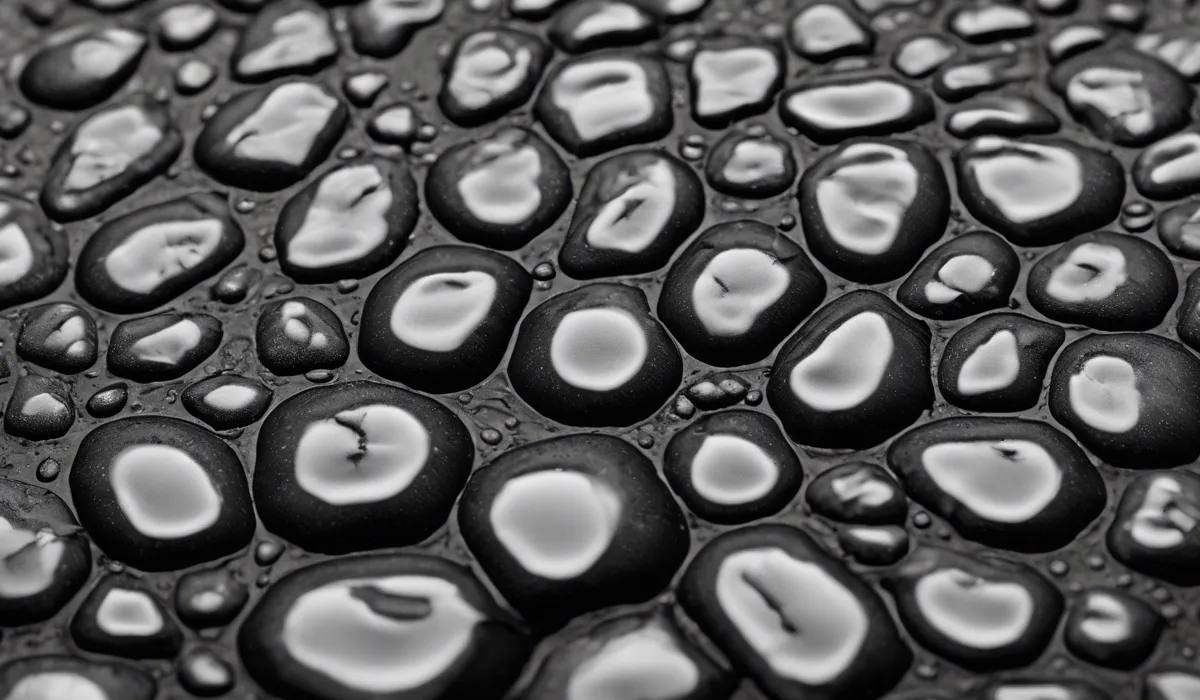Yes, mildew can be black. Although mildew is commonly white or gray, it can appear black on certain surfaces. It’s a surface fungus, differing from the more invasive black mold. If you notice black growth on damp areas, it might be mildew.
Understanding Mildew and Its Various Forms

What Is Mildew?
Mildew is a type of fungus that thrives in warm, damp environments. It’s often found on moist surfaces and can grow on a variety of materials including paper, leather, and fabrics.
Mildew is a surface fungus, which means it stays on the surface of the material it grows on. This characteristic makes it easier to clean and manage compared to other fungi.
Mildew vs. Mold
While mildew and mold are both types of fungi, they are not the same thing. Mold is typically black or green and can penetrate beneath the surface of the affected material, which can cause more damage.
Mildew, on the other hand, usually appears as white or gray patches. Both can cause health issues, but mold is often more concerning due to its invasive nature and potential to cause structural damage.
The Color Spectrum of Mildew
Commonly, mildew is identified by its white or grayish hue. However, it can appear in various colors depending on the surface it’s growing on and the age of the mildew.
Over time, the color of mildew can change, and under certain conditions, it can present a darker appearance.
Favorable Conditions for Mildew Growth
Mildew thrives in damp, warm, and poorly ventilated areas. Bathrooms, kitchens, and basements are common breeding grounds for mildew.
A lack of sunlight and air circulation can also promote its growth. Controlling humidity and moisture is key in preventing mildew development.
Can Mildew Be Black?

Dispelling Myths About Mildew Coloration
Many people believe that mildew can only be white or gray, but this is a myth. Mildew can indeed be black in color.
The misconception might arise from the more frequent encounter with white or gray mildew, but black mildew exists and is often mistaken for black mold.
When and Why Mildew Turns Black?
Mildew may appear black when it grows on certain surfaces or materials that influence its coloration. In addition, as mildew ages, it can darken.
Environmental factors such as lighting, moisture levels, and the material it’s growing on can all affect the color of mildew.
Identifying Black Mildew vs. Black Mold
Correctly identifying whether you’re dealing with black mildew or black mold is crucial. Black mold is often slimy and can cause severe structural damage as well as significant health problems.
Black mildew, while it can cause health issues, is less destructive. Knowing the difference can dictate the best approach to take for removal and prevention.
Health Concerns Associated with Black Mildew
Black mildew can cause respiratory issues, allergic reactions, and other health concerns, especially for those with asthma or allergies. While it’s not as harmful as black mold, it’s still important to address the issue promptly to maintain a healthy living environment.
Dealing with Black Mildew

Identifying the Presence of Black Mildew
To confirm the presence of black mildew, look for patchy black or dark spots on damp areas around your home.
Mildew usually has a flat pattern and may be powdery. If you’re unsure, a professional can test the substance to determine if it’s mildew or mold.
Cleaning Agents and Methods for Black Mildew Removal
White vinegar, hydrogen peroxide, and baking soda are effective natural cleaning agents for black mildew.
For non-porous surfaces, bleach can also be used with caution. Always wear gloves and a mask when cleaning mildew and ensure the area is well-ventilated.
Preventative Tactics to Keep Mildew at Bay
Preventing mildew involves controlling moisture and improving air circulation. Use dehumidifiers, fix leaks, and ensure bathrooms are well-ventilated.
Regular cleaning and the use of mildew-resistant paints can also help keep mildew from taking hold.
Recognizing When It’s Time for Professional Help
If the black mildew covers a large area or keeps returning after cleaning, it might be time to call in a professional.
This could indicate a larger issue, such as persistent dampness, that requires expert attention. Professionals will not only remove the mildew but can also provide advice on preventing future growth.
FAQs About Black Mildew
Can mildew appear black in color?
Yes, mildew can indeed appear black, especially on certain surfaces where it might stand out more prominently.
Is black mildew the same as black mold?
No, black mildew is a surface fungus and is not the same as the more invasive black mold which penetrates deeper into surfaces.
What surfaces are most likely to show black mildew?
Black mildew can commonly be found on damp, warm areas such as bathroom walls, window sills, and other surfaces with high humidity.
How can I tell if a black growth in my house is mildew?
If the black growth is on a damp surface and appears powdery or fluffy, it’s likely mildew. However, professional testing is recommended for accurate identification.
Is black mildew harmful to health?
While black mildew is less harmful than black mold, it can still cause allergic reactions or respiratory issues in sensitive individuals.
Final Thoughts
Mildew, typically white or gray, can indeed manifest as black on various surfaces, especially in damp conditions.
Although it’s often confused with more invasive black mold, black mildew is a surface fungus and represents less risk to structural integrity. Prompt identification and treatment are crucial for maintaining a healthy environment.
